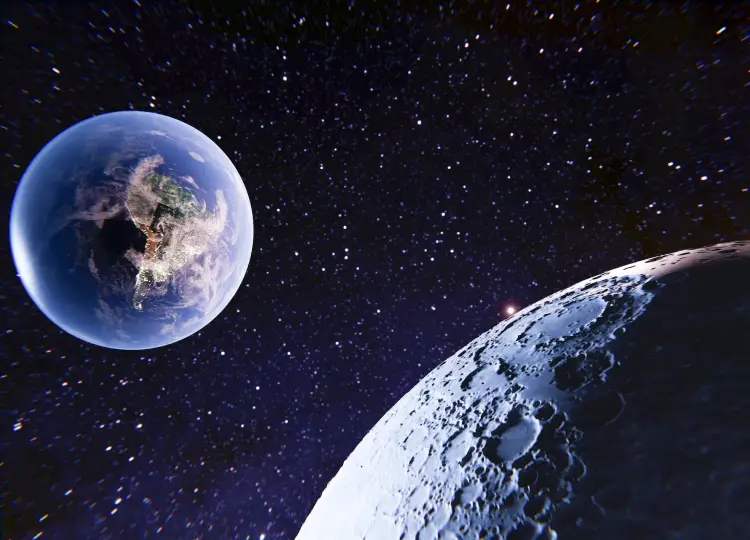If the Moon were to come significantly closer to Earth, it would have a profound and catastrophic impact on our planet. Fortunately, such an event is highly unlikely to occur naturally due to the laws of physics and the Moon's stable orbit. However, for the sake of understanding the potential consequences, let's explore what might happen if the Moon were to approach Earth more closely:
Gravitational Disruption:
The Moon plays a crucial role in stabilizing Earth's axial tilt, which is responsible for our planet's relatively stable climate. If the Moon were to come too close, its gravitational pull could disrupt this balance. This might lead to extreme variations in climate, including severe temperature fluctuations and unpredictable weather patterns.
Tidal Forces:
The Moon's gravitational pull is responsible for the tides on Earth. If the Moon were much closer, the tidal forces would be significantly stronger. This would result in extremely high and low tides, causing coastal regions to flood more frequently and intensively.
Earth's Rotation:
The Moon's gravitational interaction with Earth also affects the planet's rotation. If the Moon were closer, it would exert a stronger influence, potentially altering Earth's rotation rate. This could lead to changes in the length of a day and night, which would disrupt ecosystems and have a profound impact on life as we know it.
Earthquakes and Volcanic Activity:
The Moon's gravitational pull currently causes tides, but it also stabilizes Earth's crust. If the Moon were closer, it could trigger increased seismic activity, leading to more earthquakes and volcanic eruptions.
Ocean Currents and Ecosystems:
The Moon's influence on ocean currents is essential for distributing heat around the planet, affecting weather patterns and supporting marine life. If the Moon were nearer, the disruption of ocean currents could result in a collapse of ecosystems in the oceans, leading to the extinction of various species.
Collisions with Debris:
The Moon acts as a shield, intercepting and absorbing space debris, such as asteroids and meteoroids, before they can strike Earth. If the Moon were closer, it might not provide the same level of protection, increasing the risk of catastrophic impacts from space objects.
Human Infrastructure:
Coastal cities and regions would be particularly vulnerable to the changes in tides and sea levels caused by a closer Moon. Many coastal areas would become uninhabitable, and billions of people would be displaced.
Satellite Orbits:
The Moon's altered gravitational influence could affect the orbits of Earth's satellites, potentially leading to the malfunction or loss of critical communication, navigation, and weather satellites.
It's important to emphasize that the Moon's current orbit is very stable, and any significant change in its distance from Earth would require an extraordinary event, such as a massive collision with another celestial body. In such a scenario, the consequences for life on Earth would indeed be dire.
In summary, if the Moon were to come nearer to Earth, it would disrupt our planet's climate, geology, and ecosystems, leading to catastrophic consequences for life as we know it. However, this scenario is extremely unlikely to occur naturally, given the Moon's stable orbit and the laws of physics that govern celestial bodies in our solar system.
Image by Freepik

